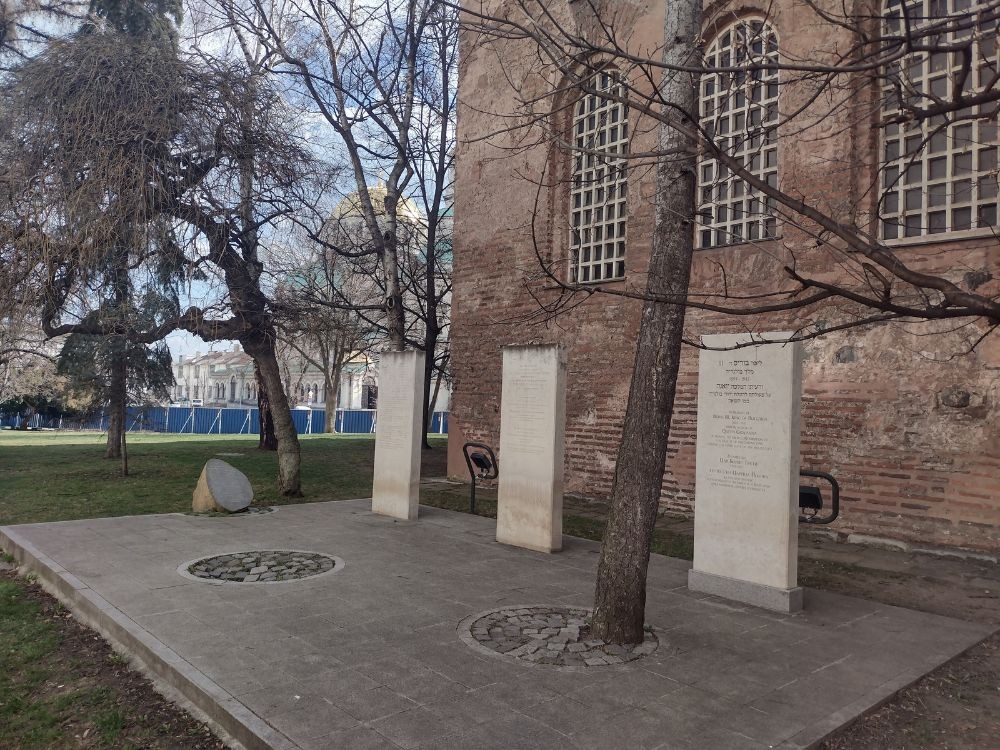Fortunately, in Sofia you will not find museums or monuments to the Holocaust, as there are in many European capitals, because fortunately, Bulgaria did save its Jews from deportation to Nazi concentration camps during World War II. In this capital there are no places of remembrance like in Berlin - the memorial by Peter Eisenmanns near the Brandenburg Gate or the Jewish Museum - Libeskind-Bau.
Unfortunately, Bulgarian society remains divided in its reading and interpretation of historical documents. Because of ideological assessments, there is still no objective historical account of the events that led to the deportation of the Bulgarian Jews and the role of the people who saved them. This is probably the reason why for the foreseeable future there will be no museum in Sofia dedicated to the rescue of Bulgarian Jews during World War II.
But at least there is no dispute about the date - March 10. In 1943, on March 10, in the office of the Minister of the Interior, Petar Gabrowski, the so-called Kyustendil Campaign for the Rescue of Bulgarian Jews was brought to fruition. The deputy chairman of the 25th National Assembly, Dimitar Peshev, led a delegation of deputies. The men stormed into the minister’s office compelled him to immediately pick up the phone and call off all preparations to deport the Bulgarian Jews. The behind-the-scenes events of the entire operation and the role of the known and unknown participants in it are debated to this day, but the date of the rescue is unanimously noted.
Where in Sofia can one pay tribute to the work of the rescuers?
The three memorial plaques on Moskovska Street, near St. Sofia Church, are the oldest in Sofia. They are copies of the memorial plaques placed in the Bulgarian Forest near Jerusalem in 1999 at the insistence of Bulgarian Jews from Los Angeles. The plaques were removed in 2000 by the NGO Israel National Fund. This was done at the request of the surviving descendants of 11,343 Thracian and Macedonian Jews deported to Israel. The plaques are dedicated to Tsar Boris III and Tzaritsa Ioanna, to the Bulgarian Metropolitan Stefan and to the Deputy Speaker of the 25th Parliament Dimitar Peshev, as well as to the act of rescue itself. They are inscribed in three languages - Hebrew, English and Bulgarian. Today there is an explanatory inscription on the side of the plaques in the capital about their restoration.

In 2016, a memorial was unveiled in the garden between the Parliament, the National Academy of Arts and Sofia University. According to its authors Momchil Tsvetkov and Georgi Tsvetkov, the composition symbolizes an embrace of a male and female figure with a common beginning. Their bodies outline a heart which houses the Star of David. In 2018, a replica of the memorial was installed in Tel Aviv's beautiful waterfront area. The Bulgarian-English bilingual inscription near the memorial reads, "We recall this outstanding rescue and remember more than 11,000 Jews from both Northern Greece and parts of ex-Yugoslavia, under Bulgarian administration, who were deported and murdered in the Treblinka death camp."

At the entrance to the garden in front of St. George's Church, on the occasion of the 70th anniversary of the rescue of the Bulgarian Jews, a monument to the former Deputy Speaker of Parliament and Minister of Justice Dimitar Peshev was placed - a replica of the bust of the Peshev erected in 2000 in the Council of Europe building in Strasbourg by the sculptor Ivan Minekov. This garden was one of the few places visited by Peshev in Sofia after he was released from prison in 1946 to barely survive without the right to work and earn a living. He used to live not far away, on 47 Neofit Rilski Str, in his sister's home, below his own apartment, which was confiscated by the Communist authorities. In front of the so-called "Kyustendil appartments" in the capital, where the rescuer died in 1973, there is a memorial plaque. You will rarely see flowers placed here.
What the four sites have in common is that they bring us back to the memory of the rescue of the Bulgarian Jews, which was not just a one-time act. They remind us also of the fate of the rescuers, of all those events and people that could never be forgotten. After all, that is what monuments are for.
Photography: Ivo Ivanov
English version: Elizabeth Radkova
On November 24, the Bulgarian Orthodox Church honors St. Catherine (Sveta Ekaterina in Bulgarian) , who was one of the most educated women of her time. She lived in the late 3rd and early 4th centuries and came from a noble family in Alexandria...
The Patriarchal Cathedral of St Alexander Nevsky is celebrating its temple feast today. The cathedral, a symbol of the Bulgarian capital, was built "in gratitude to the Russian people for the liberation of Bulgaria from Ottoman rule in 1878". Who..
On November 22 and 23, the Bulgarian Orthodox Church will solemnly celebrate the 100th anniversary of the consecration of the Patriarchal Cathedral "St. Alexander Nevsky" . For a century the cathedral has been "a witness to all the hopes and..
The Patriarchal Cathedral of St Alexander Nevsky is celebrating its temple feast today. The cathedral, a symbol of the Bulgarian capital, was built "in..
On November 24, the Bulgarian Orthodox Church honors St. Catherine (Sveta Ekaterina in Bulgarian) , who was one of the most educated women of her time...

+359 2 9336 661
